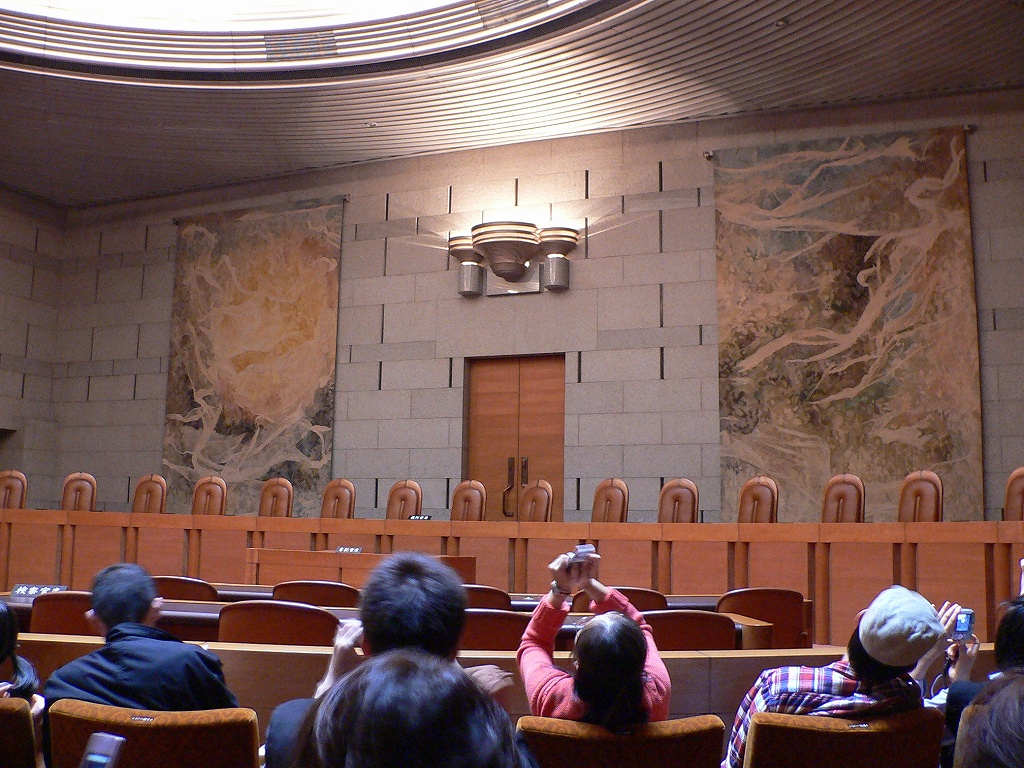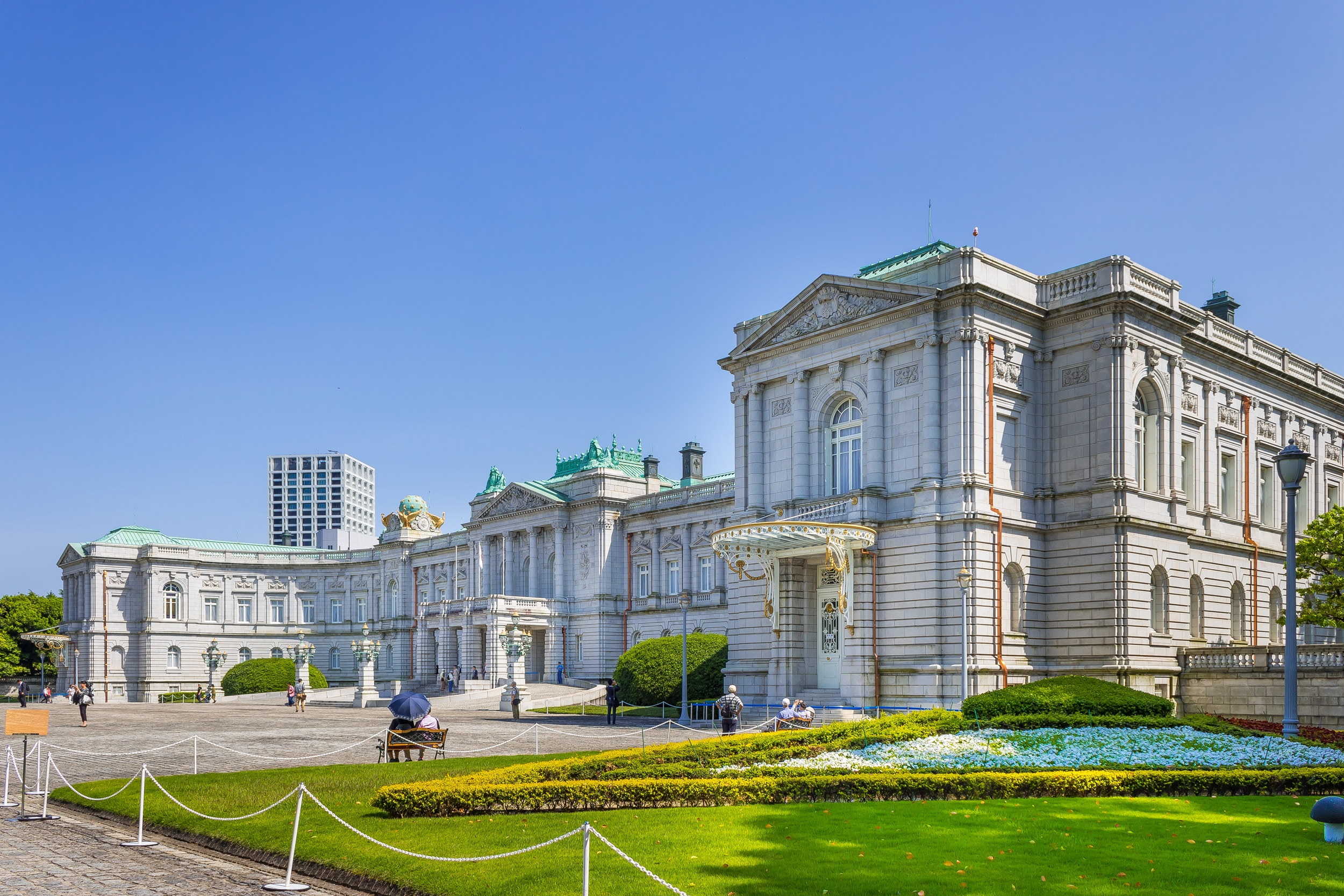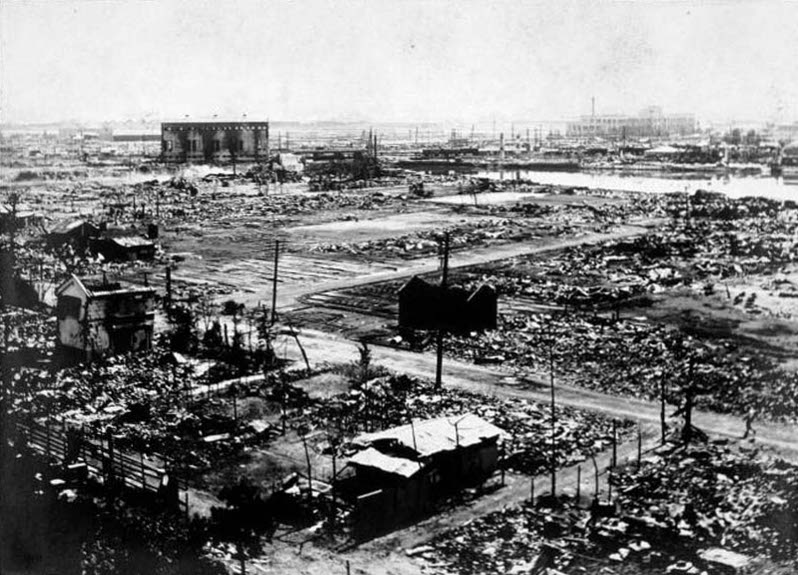|
Daisuke Namba
Daisuke Nanba (難波 大助, ''Nanba Daisuke,'' November 7, 1899 – November 15, 1924) was a Japanese student and member of the Japanese Communist Party who tried to assassinate the Crown Prince Regent Hirohito in the Toranomon incident on December 27, 1923. Family and early life Daisuke Nanba was born to a distinguished family. His grandfather was decorated by the Emperor Meiji. His father was a Member of the Imperial Diet until the act of his son forced him to resign. Before he was 21 years old, Nanba showed no signs of having any sympathy for left-wing radicals. To the contrary, he was considering becoming an officer in the Imperial Japanese Army. Political thought After 1919, a series of events radicalized Nanba. At school in Tokyo, he attended political lectures and demonstrated in support of the suffrage movement in 1920. As a result of his father's position, he had the chance to hear Prime Minister Hara Takashi's opposition to extending the franchise. Angry agains ... [...More Info...] [...Related Items...] OR: [Wikipedia] [Google] [Baidu] |
Yamaguchi Prefecture
is a Prefectures of Japan, prefecture of Japan located in the Chūgoku region of Honshu. Yamaguchi Prefecture has a population of 1,377,631 (1 February 2018) and has a geographic area of 6,112 Square kilometre, km2 (2,359 Square mile, sq mi). Yamaguchi Prefecture borders Shimane Prefecture to the north and Hiroshima Prefecture to the northeast. Yamaguchi (city), Yamaguchi is the capital and Shimonoseki is the largest city of Yamaguchi Prefecture, with other major cities including Ube, Yamaguchi, Ube, Shūnan, and Iwakuni. Yamaguchi Prefecture is located at the western tip of Honshu with coastlines on the Sea of Japan and Seto Inland Sea, and separated from the island of Kyushu by the Kanmon Straits. History Yamaguchi Prefecture was created by the merger of the provinces of Suō Province, Suō and Nagato Province, Nagato. During the rise of the samurai class during the Heian period, Heian and Kamakura period, Kamakura Periods (794–1333), the Ouchi family of Suō Province ... [...More Info...] [...Related Items...] OR: [Wikipedia] [Google] [Baidu] |
Imperial Japanese Army
The Imperial Japanese Army (IJA; , ''Dai-Nippon Teikoku Rikugun'', "Army of the Greater Japanese Empire") was the principal ground force of the Empire of Japan from 1871 to 1945. It played a central role in Japan’s rapid modernization during the Meiji period, fought in numerous conflicts including the First Sino-Japanese War, the Russo-Japanese War, World War I, the Second Sino-Japanese War, and World War II, and became a dominant force in Japanese politics. Initially formed from domain armies after the Meiji Restoration, it evolved into a powerful modern military influenced by French and German models. The IJA was responsible for several overseas military campaigns, including the invasion of Manchuria, involvement in the Boxer Rebellion, and fighting across the Asia-Pacific during the Pacific War. Notorious for committing widespread Japanese war crimes, war crimes, the army was dissolved after Japan's surrender in 1945, and its functions were succeeded by the Japan Ground Self-D ... [...More Info...] [...Related Items...] OR: [Wikipedia] [Google] [Baidu] |
Dutch East Indies
The Dutch East Indies, also known as the Netherlands East Indies (; ), was a Dutch Empire, Dutch colony with territory mostly comprising the modern state of Indonesia, which Proclamation of Indonesian Independence, declared independence on 17 August 1945. Following the Indonesian National Revolution, Indonesian War of Independence, Indonesia and the Netherlands Dutch–Indonesian Round Table Conference, made peace in 1949. In the Anglo-Dutch Treaty of 1824, the Dutch ceded the governorate of Dutch Malacca to Britain, leading to its eventual incorporation into Malacca, Malacca (state) of modern Malaysia. The Dutch East Indies was formed from the nationalised Factory (trading post), trading posts of the Dutch East India Company, which came under the administration of the Batavian Republic, Dutch government in 1800. During the 19th century, the Dutch fought Royal Netherlands East Indies Army, many wars against indigenous rulers and peoples, which caused hundreds of thousands of d ... [...More Info...] [...Related Items...] OR: [Wikipedia] [Google] [Baidu] |
Java (island)
Java is one of the Greater Sunda Islands in Indonesia. It is bordered by the Indian Ocean to the south and the Java Sea (a part of Pacific Ocean) to the north. With a population of 156.9 million people (including Madura) in mid 2024, projected to rise to 158 million at mid 2025, Java is the world's List of islands by population, most populous island, home to approximately 55.7% of the Demographics of Indonesia, Indonesian population (only approximately 44.3% of Indonesian population live outside Java). Indonesia's capital city, Jakarta, is on Java's northwestern coast. Many of the best known events in Indonesian history took place on Java. It was the centre of powerful Hindu-Buddhist empires, the Islamic sultanates, and the core of the colonial Dutch East Indies. Java was also the center of the History of Indonesia, Indonesian struggle for independence during the 1930s and 1940s. Java dominates Indonesia politically, economically and culturally. Four of Indonesia's e ... [...More Info...] [...Related Items...] OR: [Wikipedia] [Google] [Baidu] |
Supreme Court Of Japan
The , located in Hayabusachō, Chiyoda, Tokyo, is the highest court in Japan. It has ultimate judicial authority to interpret the Japanese constitution and decide questions of national law. It has the power of judicial review, which allows it to determine the constitutionality of any law or official act. History The modern Supreme Court was established in Article 81 of the Constitution of Japan in 1947. There was some debate among the members of the SCAP legal officers who drafted the constitution and in the Imperial Diet meeting of 1946 over the extent of the power of the judiciary, but it was overshadowed by other major questions about popular sovereignty, the role of the emperor, and the renunciation of war. Although the ratified wording in Article 81 states that the court possesses the power of judicial review, a part of the court's early history involved clarifying the extent of this power. In 1948, the court declared that the constitution meant to establish the type ... [...More Info...] [...Related Items...] OR: [Wikipedia] [Google] [Baidu] |
Harper Perennial
Harper Perennial is a paperback imprint of the publishing house HarperCollins Publishers. Overview Harper Perennial has divisions located in New York, London, Toronto, and Sydney. The imprint is descended from the Perennial Library imprint founded by Harper & Row in 1964. In fall of 2005, Harper Perennial rebranded with a new logo (an Olive) and a distinct editorial direction emphasizing fiction and non-fiction from new and young authors. In the end matter, books often feature a brand-specific P.S. section that features extra material such as interviews. Recent notable books include ''I Am Not Myself These Days'' by Josh Kilmer-Purcell, ''The Yacoubian Building'' by Alaa Al Aswany, ''This Will Be My Undoing'' by Morgan Jerkins, '' The Paradox of Choice'' by Barry Schwartz, ''Lullabies for Little Criminals'' by Heather O'Neil, ''Grab On to Me Tightly as If I Knew the Way'' by Bryan Charles, and '' The Yiddish Policemen's Union'' by Michael Chabon. In November 2011, they rel ... [...More Info...] [...Related Items...] OR: [Wikipedia] [Google] [Baidu] |
Akasaka Palace
is a of the government of Japan. Other state guesthouses of the government include the Kyoto State Guest House. The palace was originally built as the in 1909. Today the palace is designated by the government of Japan as an official accommodation for visiting state dignitaries. Located in the Moto-Akasaka, Minato, Tokyo, the building took on its present function in 1974, having previously been an imperial detached palace. In 2009 the palace was designated as a National Treasure of Japan. Overview The building's address is Tokyo, Minato-ku, Moto-Akasaka-chome No. 1. The building has of floor space, and together with a smaller structure in the Japanese style, occupies a site. The main building is a Neo-Baroque style Western building, resembling in particular the Hofburg Palace. It is one of largest buildings constructed during the Meiji period. The palace is surrounded by a footpath unobstructed by road crossings. The footpath is approximately 3.25 km long (rou ... [...More Info...] [...Related Items...] OR: [Wikipedia] [Google] [Baidu] |
Monumenta Nipponica
''Monumenta Nipponica'' is a semi-annual academic journal of Japanese studies. Published by Sophia University (Tokyo), it is one of the oldest English-language academic journals in the field of Asian studies, being founded in 1938. Although the journal originally published articles in several languages, such as French, German, Spanish, and Italian, the journal has been published solely in English since early 1963. A series of 75 monographs were also published until 1986 under the ''Monumenta Nipponica'' name. A symposium was held at Sophia University on October 6, 2018, to commemorate the 80-year anniversary of ''Monumenta Nipponica's'' founding. Videos of the symposium are available on YouTube. In 2020, Sophia University published a special issue commemorating ''Monumenta Nipponica's'' 80-year founding, showcasing the people who made the journal happen and noteworthy historical events. Contents Each issue contains two to three main research articles, and around twenty reviews o ... [...More Info...] [...Related Items...] OR: [Wikipedia] [Google] [Baidu] |
1923 Great Kantō Earthquake
The 1923 Great Kantō earthquake (, or ) was a major earthquake that struck the Kantō Plain on the main Japanese island of Honshu at 11:58:32 JST (02:58:32 UTC) on Saturday, 1 September 1923. It had an approximate magnitude of 8.0 on the moment magnitude scale (Mw), with its epicenter located southwest of the capital Tokyo. The earthquake devastated Tokyo, the port city of Yokohama, and surrounding prefectures of Kanagawa, Chiba, and Shizuoka, and caused widespread damage throughout the Kantō region. Fires, exacerbated by strong winds from a nearby typhoon, spread rapidly through the densely populated urban areas, accounting for the majority of the devastation and casualties. The death toll is estimated to have been between 105,000 and 142,000 people, including tens of thousands who went missing and were presumed dead. Over half of Tokyo and nearly all of Yokohama were destroyed, leaving approximately 2.5 million people homeless. The disaster triggered widespread social ... [...More Info...] [...Related Items...] OR: [Wikipedia] [Google] [Baidu] |
High Treason Incident
The , also known as the , was a socialist-anarchist plot to assassinate the Japanese Emperor Meiji in 1910, leading to a mass arrest of leftists, as well as the execution of 12 alleged conspirators in 1911. Another 12 conspirators who were initially condemned to death had their sentences commuted to life in prison. Two others received prison sentences of 8 and 11 years. Investigation On 20 May 1910, the police searched the room of Miyashita Takichi (1875–1911), a young lumbermill employee in Nagano Prefecture, and found materials which could be used to construct bombs. Investigating further, the police arrested his accomplices, Nitta Tōru (1880–1911), Niimura Tadao (1887–1911), Furukawa Rikisaku (1884–1911) and Kōtoku Shūsui and his former common-law wife, feminist author Kanno Suga. Upon questioning, the police discovered what the prosecutor's office regarded as a nationwide conspiracy against the Japanese monarchy. In the subsequent investigation, many known left ... [...More Info...] [...Related Items...] OR: [Wikipedia] [Google] [Baidu] |
Russian Revolution
The Russian Revolution was a period of Political revolution (Trotskyism), political and social revolution, social change in Russian Empire, Russia, starting in 1917. This period saw Russia Dissolution of the Russian Empire, abolish its monarchy and adopt a socialist form of government following two successive revolutions and Russian Civil War, a civil war. It can be seen as the precursor for Revolutions of 1917–1923, other revolutions that occurred in the aftermath of World War I, such as the German Revolution of 1918–1919. The Russian Revolution was a key events of the 20th century, key event of the 20th century. The Russian Revolution was inaugurated with the February Revolution in 1917, in the midst of World War I. With the German Empire inflicting defeats on the front, and increasing logistical problems causing shortages of bread and grain, the Russian Army was losing morale, with large scale mutiny looming. Officials were convinced that if Tsar Nicholas II abdicated ... [...More Info...] [...Related Items...] OR: [Wikipedia] [Google] [Baidu] |
Kawakami Hajime
was a Japanese Marxist economist of the Taishō and early Shōwa periods. Biography Born in Yamaguchi, he graduated from Tokyo Imperial University. After writing for ''Yomiuri Shimbun'', he attained a professorship in economics at Kyoto Imperial University. Increasingly inclined toward Marxism, he was involved in the March 15 incident of 1928 and was expelled from the university as a subversive. The following year, he joined the formation of a political party, Shinrōtō. Kawakami went on to publish a Marxist-oriented economics journal, ''Studies of Social Problems''. After joining the outlawed Japanese Communist Party, he was arrested in 1933 and sent to prison. After his release in 1937, he translated ''Das Kapital'' from German to Japanese. Kawakami spent the remainder of his life writing essays; novels; poetry; and his autobiography, ''Jijoden'', which was written secretly between 1943 and 1945 and serialized in 1946. It became a best-seller and was "extravagantly prai ... [...More Info...] [...Related Items...] OR: [Wikipedia] [Google] [Baidu] |





